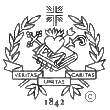Introduction
Java started out being a computer programming language for consumer electronic devices. The task was to create a software package for the chips of these growing and constantly changing electronic devices. Because there was no know programming language that allowed it to be ported to several different type of chips, a language called Oak was developed. As time pasted and the World Wide Web became popular, more and more people started writing Hyper Text Markup Language (HTML) documents. By this time the Oak language changed its name and became known as Java. Because the neutral platform based language it was, many people started to incorporate Java into their HTML documents and became known as applets. Applets are basically a software package embedded inside another. Java is such a powerful and versatile language it has grown and grown. This paper will discuss in great detail the Java language and how many of the qualities of Java were put to use through a software package called "Telecommunications Conference Center." Such features as portability, reusability, and software development.
The ultimate goal was to produce a telecommunications conference center written in Java. Some other underlying goals that were set to focus on; To learn the Java language, make use of the Object Oriented Paradigm and the object-oriented concepts, and lastly network communications in general as well as network communication within the language Java.
The software package would include the capability to connect to a conference center and chose which conference the user would like to attend. The user then would enter the room and begin participating in any on going conversations. These conversations could be taking place in two formats. First by participating in a interactive chat session by using the Chat Window. Or second by making use of the Easel Page window where you could convey ones thoughts in a graphical format.
There were a number of additional goals set to achieve from working on this project. Not only was it another class assignment to write a computer program, but also to apply all the skills we (as a team) had learned in the last several years. This project was intended to give all team member a hands on experience of producing a software package and to work as a team.
Such a goal was to see how six complete strangers put together as a team and have them produce a software package in such a short time frame, all the way from square one of the life cycle, up to completion, not including the maintenance or retirement phase of the life cycle. There are eight phases of the software life cycle. The phases are Requirements, Specifications, Planning, Design, Implementation, Intergration, Maintenance, and Retirement. The team delt with each of these phases in different manners. In each phase a software developer is presented with many thing that have to be accomplished. This paper will not get into in depth discussion of these phases, because entire book have been written on just the different phases. However this paper with expose the reader to how each phase was handled by the team.
This project also tested the teams knowledge and understanding of object-oriented paradigm and its concepts. Such concepts as source code reuse, classes and class libraries, objects, inheritance, message passing among objects, and polymorphism. Many of these concepts were used, but never pointed out explicitly.
The underlying motivation for the Java applet that the team members worked on, was to submit the Java applet as a representative piece to the Sun Microsystems Inc. Java Cup Contest. Sun Microsystems, Inc. as the originators of Java wanted to enforce the true purpose and functionality of Java, so the created the Java Cup Contest. A team was formed to represent Villanva University. The team submitted our applet under the category of web agents. Web agents are primarily are software that can be used by or used for access material on the World Wide Web (WWW). The WWW is large, but also a subsection of the Internet. Up to this point in time the only web agents that have been seen by the WWW community are Web brosers, such as Mosaic, Netscape, and Lynx. Other web agents are web editors, or commonly called Hyper Text Markup Language (HTML) editors. HTML editors are applications used to create or view HTML documents
 Top of Paper |
Previous Page |
Next Page |
Bottom of Paper
Top of Paper |
Previous Page |
Next Page |
Bottom of Paper
Written By Graham L. Mehl
Last Modified on April 23, 1996
© Villanova University
 Top of Paper |
Previous Page |
Next Page |
Bottom of Paper
Top of Paper |
Previous Page |
Next Page |
Bottom of Paper